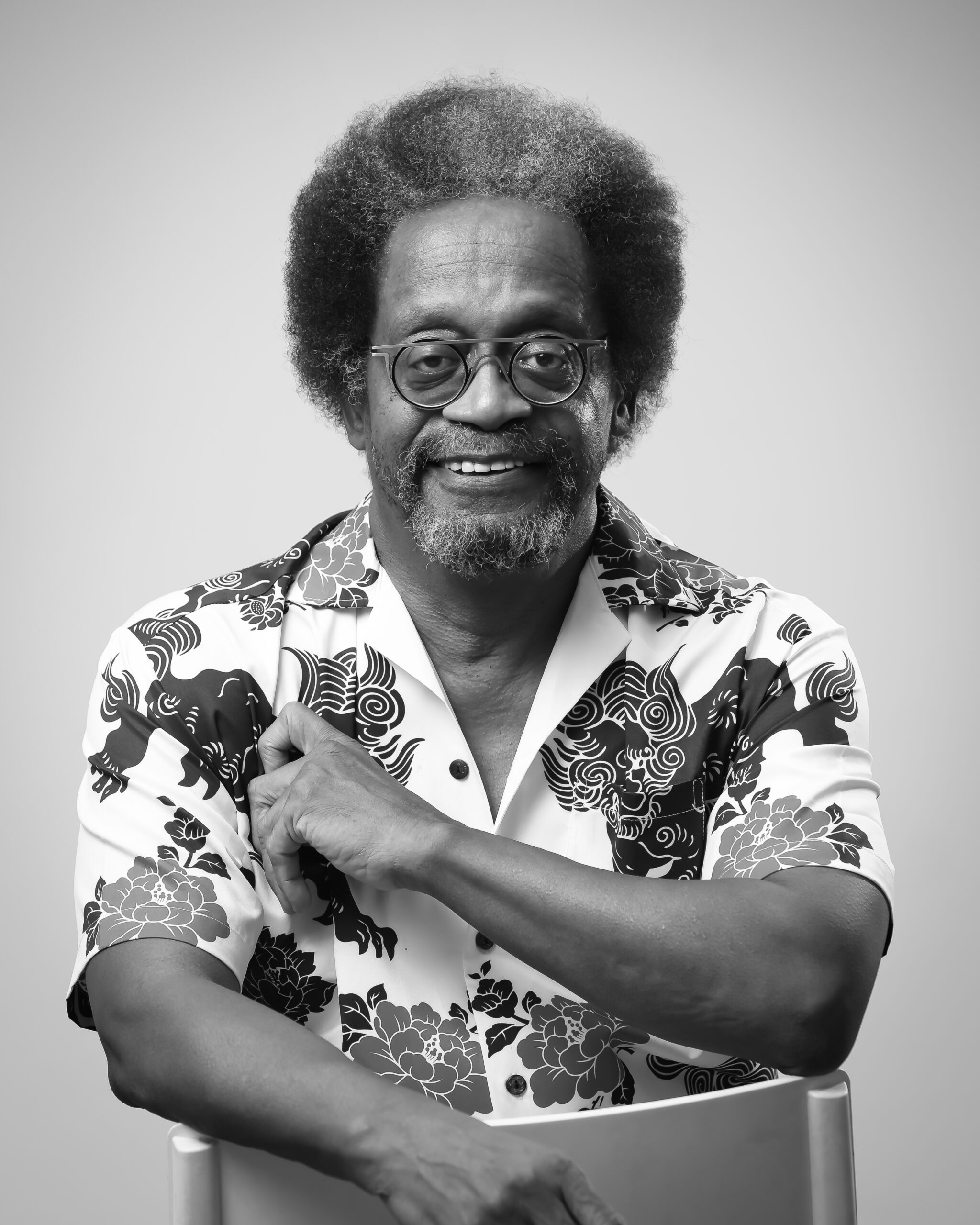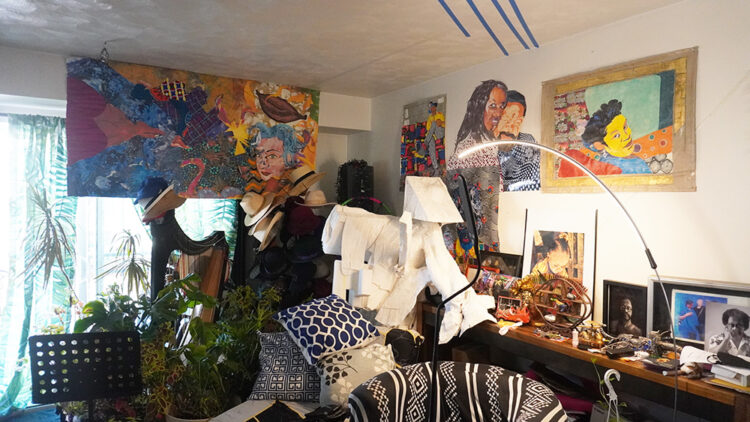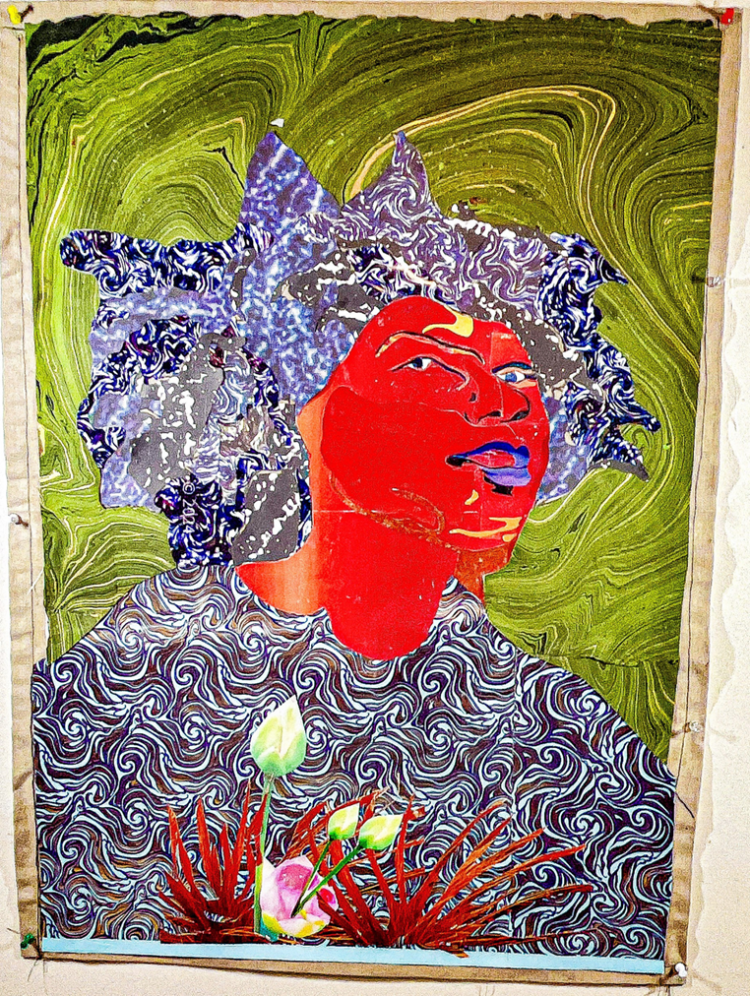Joel Croom’s Soweto Woman is currently on view in the Digital Window Exhibition space at Phillips@THEARC as part of the Digital Intersections series. The Phillips Collection Fellow Arianna Adade met with the artist to talk about his practice.

Joel Crooms, Photo: Tony Powell
How does your art challenge the conventional ideas of Black identity in contemporary culture?
The use of “abstraction” has, is, and will be for some time a challenge to the popular idea of “Black Art.” Many experience dissonance with seeing work by Black artists in any form other than figurative historical or idealized images. I often have to explain that decorative works on the exterior of African homes are examples of abstract art.
In addition, Islamic calligraphy “Adinkra” symbols and hieroglyphics are abstracted glyphs. Paraphrasing Sam Gilliam, “Black artists making abstract art is in itself a radical revolutionary self-defining act.”

Joel Crooms studio
What are some of the Afrofuturist symbolisms and mythologies present in your artwork(s)?
The use of digitally generated elements “bits and bytes” in my work is the strongest aspect of futuristic symbolism. This aspect may not be evident to the viewer, and involves using plastics, LED lighting, and sound. An evolving situation for me personally as a diaspora artist is the use of international icons and glyphs from the myriad locations we find ourselves in the world.

Joel Crooms, When I Saw Her Eyes
What artists from the Black Arts Movement inspired you and why?
As a young artist coming of age in the 1970s, the consciousness-changing Black Arts Movement expanded my creative horizons. The idols and mentors came from diverse media—plastic, literary, cinema, dance, music. There are those recognized by the dominant society to some degree and so many others known to the arts community who aren’t acknowledged.
Some popular names are Sam Gilliam, Alma Thomas, Ben Jones, and Barbara Chase-Riboud, who blew my mind. Benny Andrews, Ademola Olugebefola of the WEUSI group, and Betye Saar as well. These artists showed me and many others that we can indeed be professional groundbreaking creatives.

Joel Crooms, Red Lady with Flowers
How do your works contribute to the conversations within Afrofuturism?
I feel that doing work that pushes beyond my current capabilities and interests will spark inquiry and debate. I want to show that there are no limits. Open your mind.
Science fiction comics in particular, Heavy Metal with the inclusion of Black characters made me feel as though there was space for us in that genre. However, many seem reluctant to talk about Blacks’ involvement in the work. We still make folks uncomfortable.

Joel Crooms studio
What do you envision for the future of Afrofuturism in art?
That Afrofuturism will create universal and cosmic work far beyond anything we’ve experienced yet.

Morning Creativity by Joel Crooms
